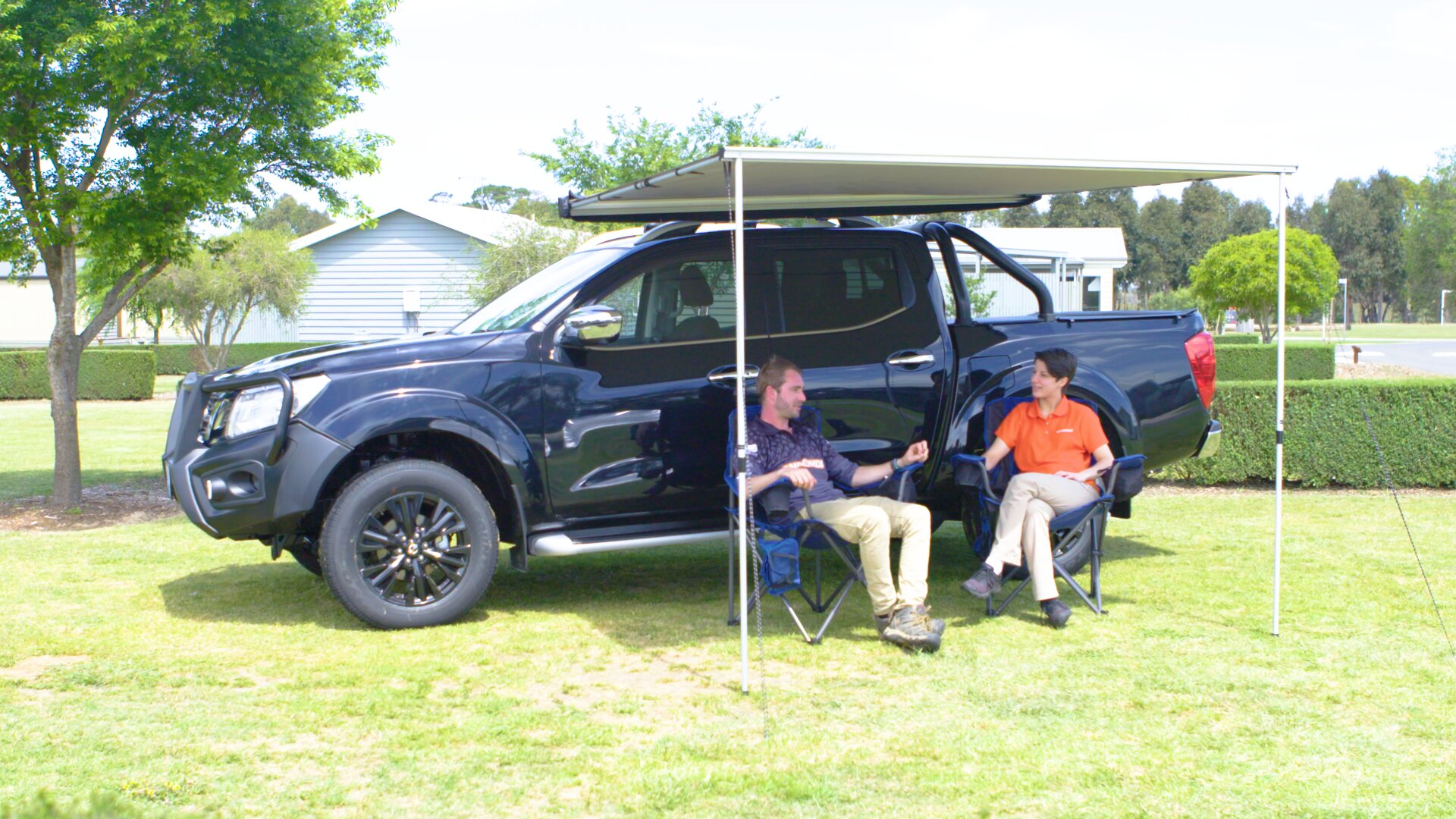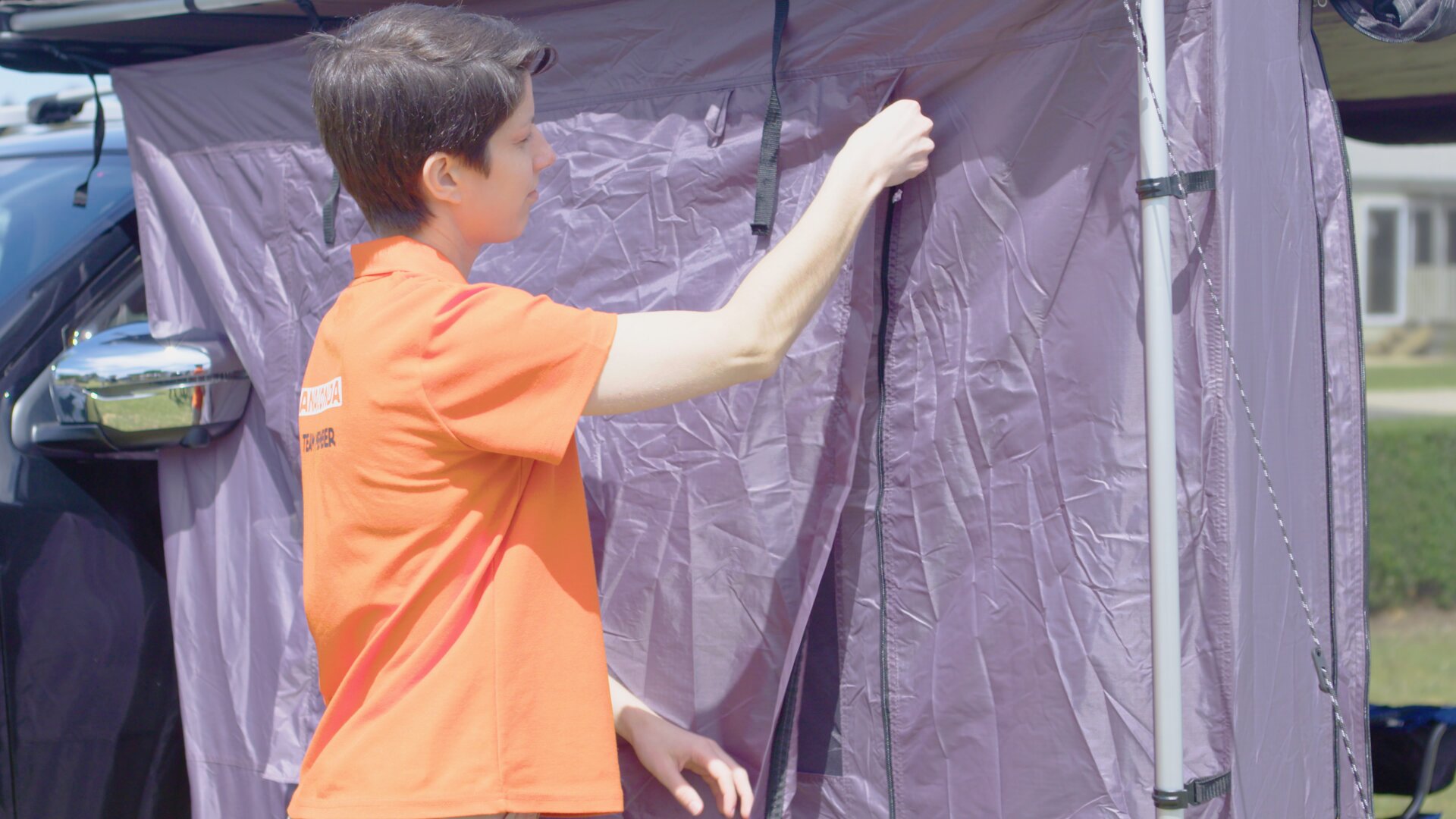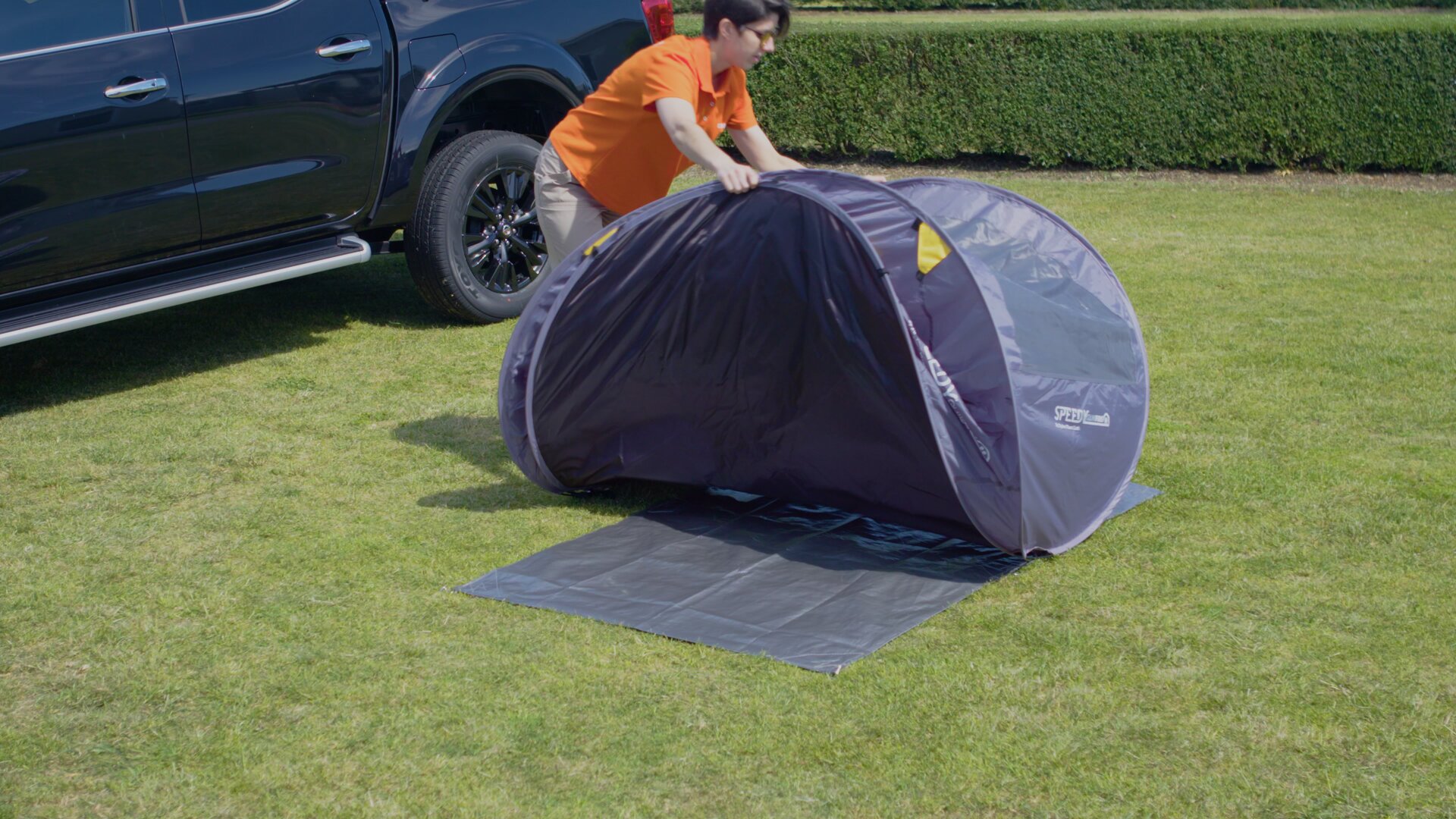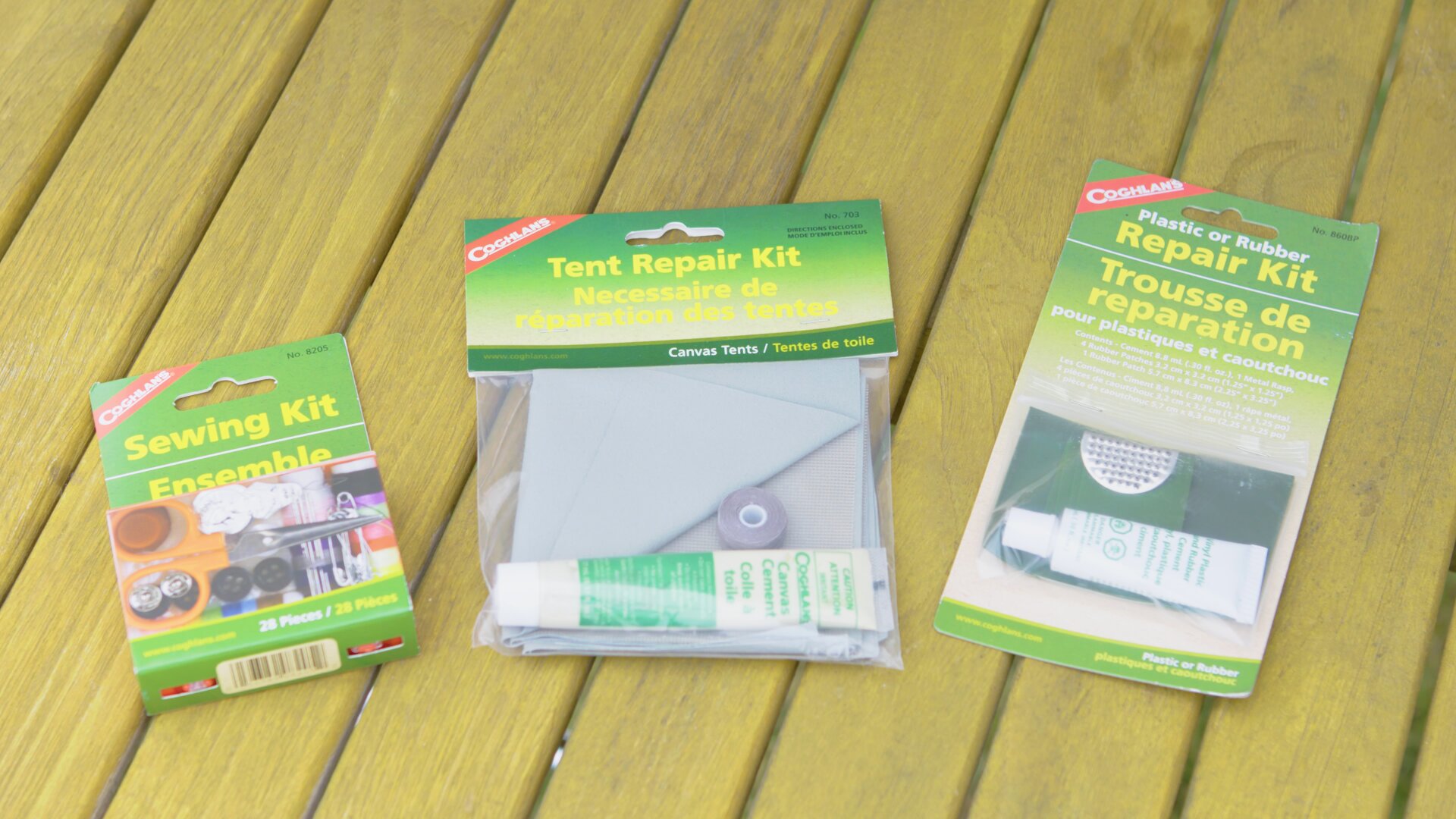| Your browser is not supported. | ||
|
Please browse our site using any of the following options:
| ||
Best 4WD Awnings And Caravan Shelters Buying Guide
Hitting the road for a 4WD or caravan adventure? Whether you're setting up camp in the middle of nowhere or staying in a caravan park, you'll need to take your own shelter. If you have an awning or an annex you'll have much-needed shade on scorching hot days, and shelter from the rain when it's bucketing down, so you're always a happy camper.
What's the best 4WD awning or annex?
Which shelter is best will be different for everyone, because it depends on:
- Where you'll use the shelter now and in future (will it be hot, wet, windy or mozzie-infested?)
- How fast you want to be able to set up and pack down the shelter (will you have any help?)
- If you're setting up a table and chairs (it'll need to be bigger than their total length and width)
- If you want to be able to adjust the height and angle (to suit the sun, wind and rain changes)
- If you only want an overhead cover for the sun and rain or walls too (for wind/bug protection)
- How much space you'll have for it (it has to fit within the dimensions of your set-up spot)
- How often you'll be using it for and how often (a few days a year or for weeks at a time?)
- How long you want it to last (do you want a shelter you can use for many years to come?)
Shop Gazebos, Screens & Shades
Which shelter should you buy?
Choosing a shelter is easier when you break it down in into these five steps:
1. Types
First, think about which type of shelter you want:
Awning
An awning:
- Is attached to 4WD roof racks for fast, convenient shelter anywhere.
- Provides you with overhead shelter from the sun and the rain.
- Side walls (sold separately) provide extra shade and shelter from wind and rain.
- Some awnings stay attached and slide/roll out for fast set up (just attach poles).
Annex
An annex:
- Is an enclosed extension for your 4WD or caravan which has four walls.
- Provides more protection from the elements, as well as mozzies and sand flies.
- Takes more time to set up so is better suited to staying in one place for longer.
- Annexes that attach to 4WDs are also called tent rooms and mesh rooms.

Tarp
A tarp:
- Can be used to create a DIY shelter (with ropes and poles).
- Folds up small so is easy to fit in your 4WD or caravan.
- Protects campers from sun and rain when set up overhead.
- Can be used to cover and protect equipment, bikes and luggage.
- When put underneath a tent, a tarp:
- Stops water seeping in from the ground.
- Provides extra insulation from the cold ground.
- Creates a waterproof place for sitting when the ground's wet.
- Can be used over a tent for extra rain and wind protection.
Rooftop Tent
A rooftop tent:
- Sits on top of 4WDs and attaches to the roof racks.
- Comes with a ladder for climbing up and down.
- Keeps you off the ground so is a great space saver.

2. Materials
The materials a shelter is made from determines how much it protects you from the sun and rain, as well as how long it will last.
Fabric
Outdoor shelters can be made from:
- Waterproof polyester (fabric used to make most shelters).
- Canvas/cotton (naturally waterproof but heavy when wet).
The key things to consider when it comes to fabric are:
- Waterproofing - some shelters are more waterproof than others.
- Fabrics with a PU (Polyurethane) coating are more waterproof.
- Shape - rain water runs straight off an angled shelter and won't collect on the roof.
- Seams - if the seams are sealed or heat taped, the fabric's more watertight.
- Sun protection - to ensure you're protected from the sun's harsh UV rays, look for:
- The UV protection factor (in summer you'll want a shelter with a 50+ UPF)
- A shelter fabric with a silver coating (this gives you better sun protection).
- The colour of the tarp (if you're going for a DIY shelter):
- Silver is waterproof, UV stabilised, strong and provides the best protection.
- Green mesh isn't as strong but is more breathable, providing good protection.
- Durability - fabric thickness is given in denier (D) which determines how durable it will be:
- A higher D fabric is more waterproof and can handle stronger winds but is heavier.
- A lower denier fabric is lighter but less durable than a higher denier shelter fabric.
- Shelters with higher denier fabrics won't rip as easily, so last longer than a lower D.
- Ripstop fabrics are made to prevent rips getting bigger so they're more durable.
- Quality stitching reduces the risk of the shelter's fabric ripping.
Poles
When it comes to the sturdiness and strength of the shelter, look for:
- Thickness - thicker poles are sturdier and last longer (but they're also heavier).
- Durability - Any poles, ropes or frames should be made from a durable material:
- Aluminium weighs less than steel, but steel is stronger so lasts longer.
- If you go with steel, choose one that's powder-coated and rust-resistant.
Storage
If you're going for an awning that's permanently attached to your roof racks (rather than one you put in the boot), make sure the case is durable so your awning is protected from the elements while you drive around and will last.

3. Size
When it comes to size, think about how and where you want to use your awning or annex:
- For camping - it needs to be able to fit in the campsite along with your tent, car etc.
- For how many - how many chairs or picnic rugs do you want to be able to fit under it?
- For outdoor dining - how wide and long does it need to be to fit your table and chairs?
- For food and drinks - how many coolers and bags need to be kept in the shade as well?
You considering different sizes, you'll also need to:
- Make sure it fits in the boot/on the roof racks when packed up, so use a measuring tape.
- Check whether your vehicle has compatible attachments or extra brackets are needed.
4. Set-up Simplicity
How easy do you want setting up the shelter to be, and packing it up when it's home time?
It's important to think about:
- Whether you'll be doing it all alone or if you'll have other (adult) helpers.
- Some awnings slide out of 4WD roof racks so only take a minute to set up.
- Some annexes take a bit of time to set up and you may need help.
- Some are light or have wheelie bags, others are too heavy to carry alone.
- Giving yourself enough time to set up the shelter when you arrive at your destination.
- Doing a trial run at home so the set up and pack up isn't stressful the first time you use it.

5. Quality
When weighing up which shelter to buy, think about quality versus cost, and keep in mind:
- Shelters with a light fabric and frame will be lighter but less durable than heavy shelters.
- Some manufacturers sell replacement fabrics, poles and ropes for DIY shelter repairs.
When it comes to how much you should spend on a shelter, it depends on how you'll use it:
- If you're travelling around Australia, invest in durable materials and a ripstop fabric.
- If you'll use the shelter in summer you'll need a good UVP rating to protect your skin.
- If it isn't secure and the wind catches it, it can cause injuries and break, so use pegs/ropes.
- Cheaper shelters tend to be less waterproof than shelters that cost more, so you get what you pay for.
- If you want your comfortable camping trips for years to come, it's worth spending a bit more on a good-quality awning or annex.
How much are awnings and annexes?
Anaconda awnings range from $50 to $300, with front and side walls sold separately for $90-$120. Annexes can be created by adding a tent room or mesh room to your awning for $150-$300 (awning and poles not included).
When you go to the gazebos, screens and shades section on the Anaconda website, you'll see tick box filters down the left hand side of the page. Using these filters makes working out which outdoor shelter to buy simpler because you can choose to filter the shelters you see by their:
- Price - so you only see shelters within your budget on the page.
- Deal - so you only see shelters on sale or at clearance prices.
- Size - so you can see which shelters will suit the size you need.
- Colour - so you can find the specific colour you want fast.
- Brand - so you can see all shelters made by a specific brand.
Also factor in any additional accessories you may want:
- Pegs and ropes to keep the shelter securely attached to the ground (if not included).
- A side wall, front wall or four walls to create an enclosed annex room.
- LED light strips you can stick on to the awning or annex for night lighting.
- A repair kit with patches, liquid seam sealers, needles and threads for on-road repairs.
- Brackets to attach the shelter to your roof racks (sometimes included).
- Flooring so you can keep the undercover area clean and hygienic.
Other Camping & Hiking Essentials
Check out Anaconda's range of Camping & Hiking products available online or visit your local store.